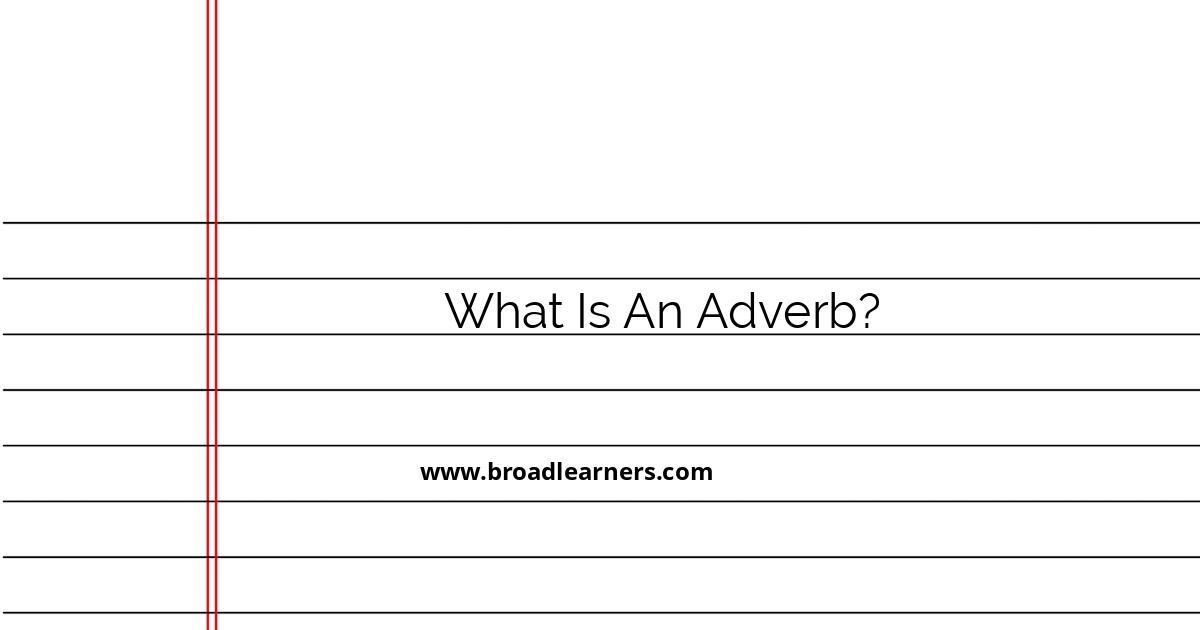An adverb is a part of speech that provides additional information about verbs, adjectives, other adverbs, or whole sentences. They can modify or qualify actions, events, or descriptors, often answering questions like how, when, where, and to what extent something occurs.
- Functions of Adverbs
- Adverbs modify:
- Verbs: They detail how an action is performed.
Example: She quickly finished her homework.
Here, "quickly" modifies the verb "finished" by describing the manner of completion.
- Adjectives: They change the strength or clarity of an adjective.
Example: The movie was extremely entertaining.
In this instance, "extremely" intensifies the adjective "entertaining," indicating a high degree of entertainment.
- Other Adverbs: They can adjust the intensity or frequency of another adverb.
Example: He ran very quickly.
Here, "very" modifies "quickly," indicating the degree of speed.
- Whole Sentences: They provide context or commentary on the entire sentence.
Example: Unfortunately, the event was canceled.
"Unfortunately" modifies the whole sentence by providing the speaker's perspective.
- Types of Adverbs
- Adverbs can be categorized into several types based on their functions:
- Adverbs of Manner: Describe how something happens.
Example: She smiled happily.
- Adverbs of Time: Indicate when an action takes place.
Example: We will leave soon.
- Adverbs of Place: Indicate where something happens.
Example: Please sit here.
- Adverbs of Frequency: Indicate how often something occurs.
Example: They rarely visit the museum.
- Adverbs of Degree: Indicate the extent or degree of something.
Example: The water is too hot.
- Adverbs of Purpose: Explain why something happens.
Example: He works hard to support his family.
Placement of Adverbs
Adverbs can be placed in different positions within a sentence depending on what they modify and the emphasis desired.
- Beginning of a Sentence: Often used for emphasis or setting the context.
Example: Slowly, she entered the room.
- Middle of a Sentence: Placed near the verb or adjective they modify.
Example: She often visits her grandparents.
- End of a Sentence: Common for adverbs of manner, degree, or frequency.
Example: They played quietly in the garden.
By understanding the function, types, and placement of adverbs, one can enhance their writing and communication skills, making their sentences more precise and engaging.

Did I miss anything? Respond below